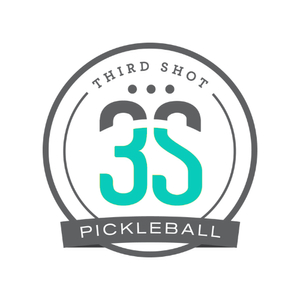How hard is too hard? How easy is too easy? If you’re an instructor who gives pickleball lessons or someone who takes them, this question should matter to you.
Whether you’re working on a drill or playing a game, finding the optimal challenge is a key ingredient in making the activity successful.
Let’s imagine I gave you a task of throwing a beanbag into a bucket from just two or three feet away. The chances are good that if you weren’t at 100% success immediately, you would be very close to it. And it wouldn’t take long before you got bored of this activity and looked for something else to do. Even if I introduced the idea of scoring a point each time you sunk the beanbag, you still probably wouldn’t play this game for very long. It’s just too easy. And if it’s too easy, it’s neither fun nor rewarding.
Conversely, if I gave you the same task of getting the beanbag in the bucket but I made you do it from 50 feet away, you might try a dozen times or so, but it is very unlikely that you’ll have success. You just won’t get that satisfying sound of making the beanbag plop down in the bucket. And unless you are a glutton for punishment, I suspect you would abandon this activity pretty quickly as well. It’s just too hard. And if it’s too hard, it is neither fun and rewarding.
The same is true in pickleball lessons. If the task that the coach assigns to players is too simple, they are going to lose interest and motivation pretty quickly. Similarly, if the task is too tough players are likely to get frustrated and give up. The trick is to apply the Goldilocks principle — hard enough that there is challenge, but not so much that it’s impossible.
So what is the optimal amount of challenge?
Well, this is where things get tricky. Mark A. Guadagnoli and Timothy D. Lee (2004) introduced the idea of the “challenge point framework”. You can read more about it here.
We have found that when your players are having success between 60% and 70% of the time, they are usually in that sweet spot. They are doing well enough to see that it is possible for them to be successful, but aren’t doing so well that they think have mastered the skill.
It is important for instructors to monitor their players’ rate of success. If it is too high (over 70%) adjust one of the many variables you can play with to make things tougher: make the ball sent more challenging; make the player move more; give them a smaller taregt or add some pressure. And if the players are struggling, adjust any of those things to make thier talk just a little bit easier.
Optimal challenge and fun
When players understand what they are doing and why, and when they are given the right degree of difficulty, you (and they) are set up for success. They will work hard, ask questions and strive for improvement. This is an ideal scenario for everyone.
Whether you are in charge of running activities for others just or doing some training on your own, start to measure how much success is being had. Strive to find that optimal challenge sweet spot of 60%-70% and you’ll find that you’ll make pickleball even more fun than it already is.

